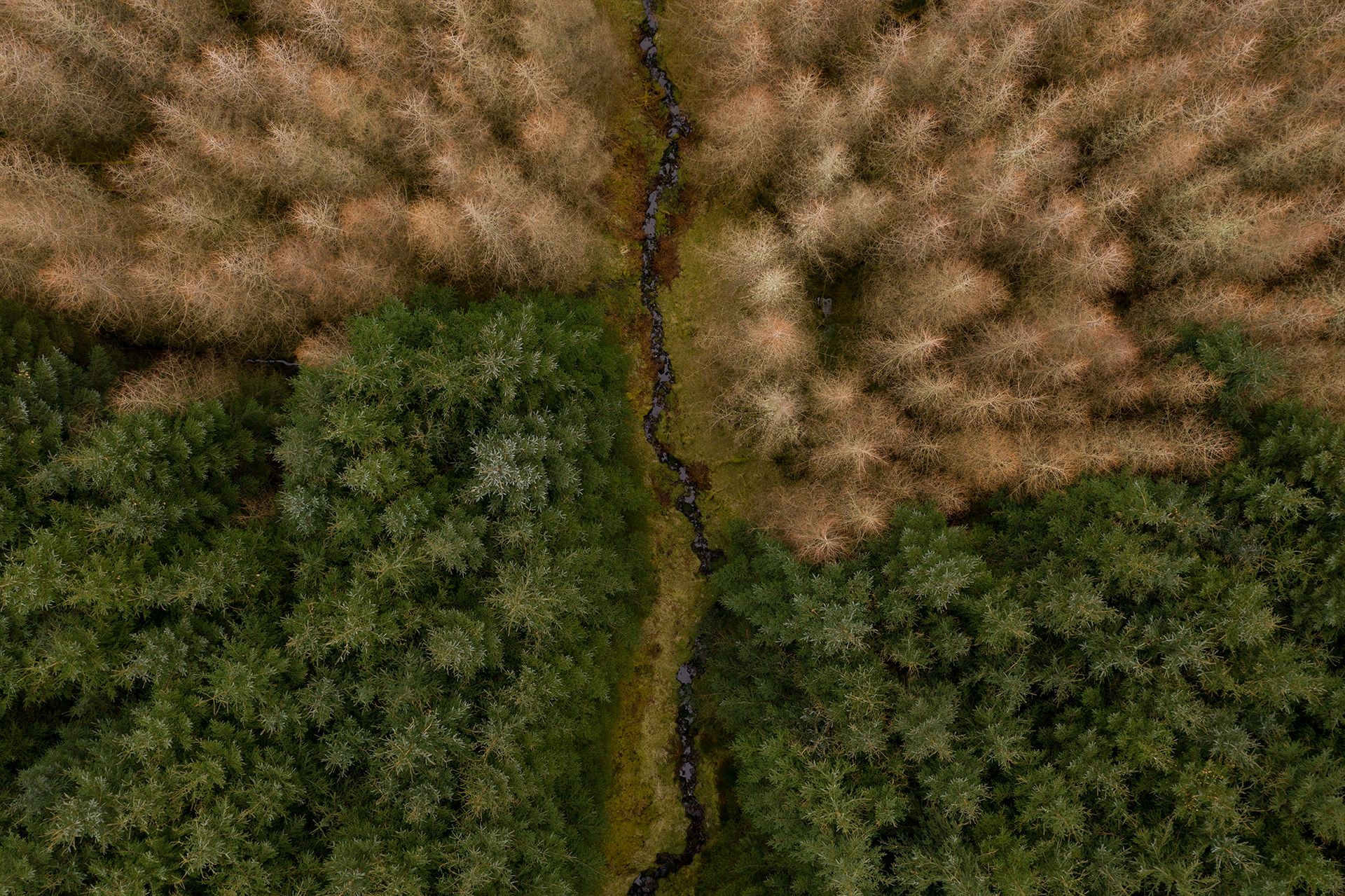Healing the forest of Hainings
A deadly disease killed half this ancient forest. We hear straight from the person bringing the forest back to life.

Just the gist
Short on time? Here's what you need to know this month:
- 🆕 The team have bought the forest of Hainings. It's 35 acres of forest which has been ravaged by Ramorum, a Larch disease.
- 🌲 The team will fell all the diseased trees to stop the spread, and plant Ramorum-resistant species in their place.
- 🔥 The diseased trees will be converted into biochar on-site, which will kill any disease in the timber– and keep the plant carbon locked up for thousands more years.
- Find out more in a special update from Future Forest's cofounder, below!
For more updates like this one, follow Wren on Twitter and Instagram.
This month, we hear straight from Jade, Future Forest's cofounder and COO, about their new forest called Hainings.
Healing Hainings
Jade:
Our new “Hainings” forest (adjacent to our Brodoclea Forest in Dalry, Scotland) was a plantation consisting of larch and spruce trees. The larch has been killed by Ramorum disease which also infects native trees and many other plants.
By law we have to fell the larch trees to limit the spread of the disease.
We are working with a local Horse Logger named Ken to help with felling the site. Ken will use the traditional method of Horse Logging to clear the site, as this is the most eco-friendly option. We will use horses to pull the felled spruce timber to the roadside as this will limit soil damage. Ken will also be training young people from the local community on site, enabling them to learn how to fell trees safely and expand their forestry knowledge.
Once felled, the infected trees will be converted to biochar on site, which will kill any infection living on the timber.
The felled areas will be replanted with suitably Ramorum resistant tree species. The rest of the spruce plantation will be converted into a continuous cover forestry system. This means that over time the spruce will gradually be replaced with a mix of other tree species. The aim will be to have a species diverse woodland with a varied horizontal and vertical structure.
- Jade Read, Cofounder and COO, Future Forest
Over the sea: Glenaros, Isle of Mull
Back on the Mull, the team are planting plenty of trees– they've planted about 15,000 here so far. They're planting a mixture of native species to restore the woodland and encourage the Scottish biodiversity to flourish.
The team welcome another expert to the project

The Future Forest team are excited to welcome Simon Manley to their growing numbers!
In his role as Head of Carbon, Simon hopes to sequester as much carbon as possible from the atmosphere and grow a business that creates and sells great carbon products. We should be finding out more about this side of the business soon.
Your support means a lot. Sequestering carbon is key to curbing global warming, and this project is developing the most efficient way to sequester huge volumes of CO2 in limited space. With your help, we can spread the model to thousands more hectares. 🧡
- Thomas Hollands

